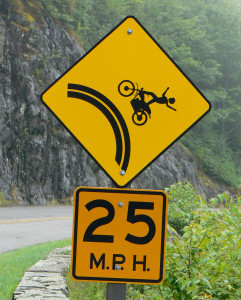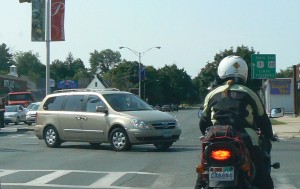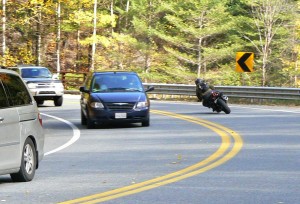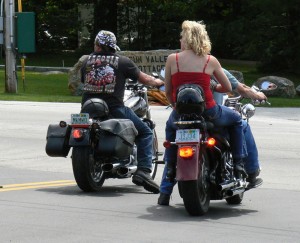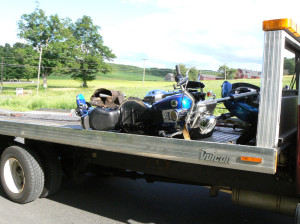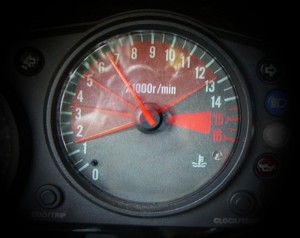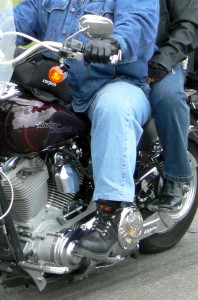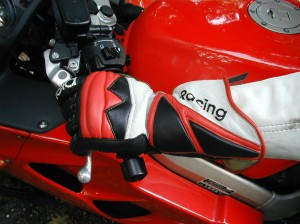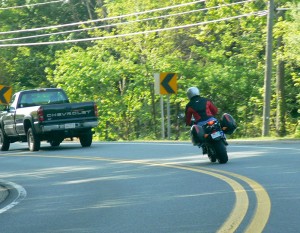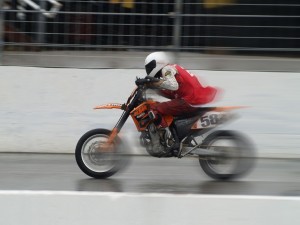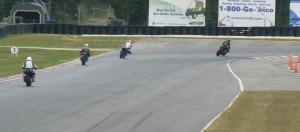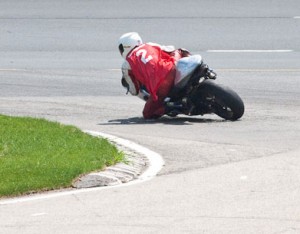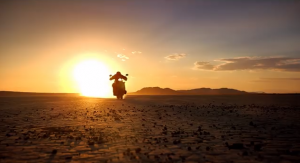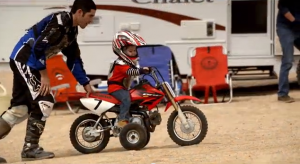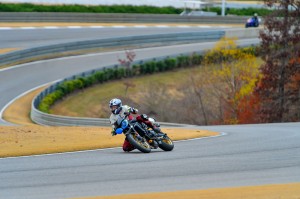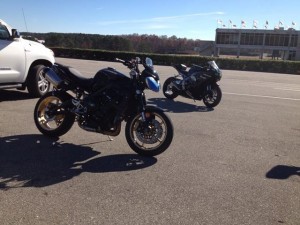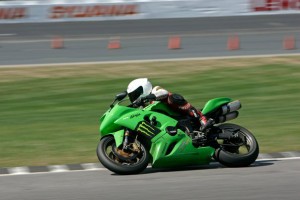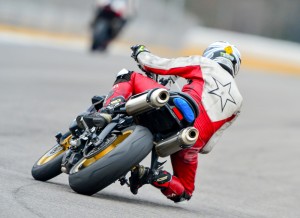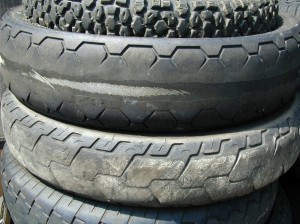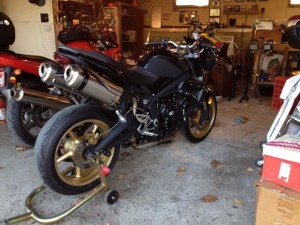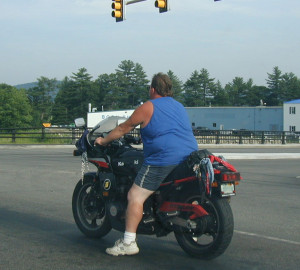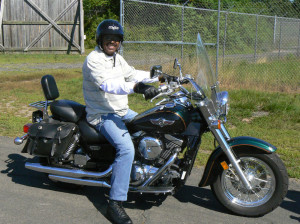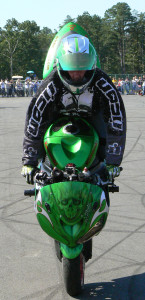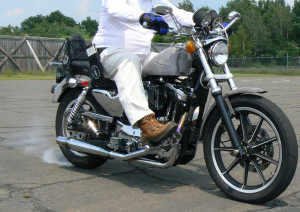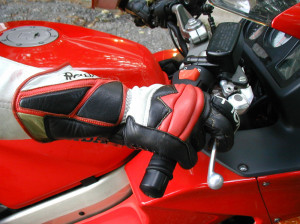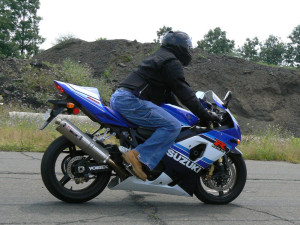My daughter, Jeannine recently started a conversation about the plight of women riders that inspired me to write this post.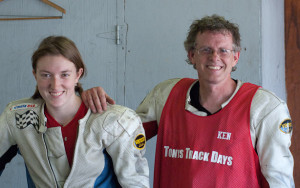
![]() Women riders are a significant part of motorcycling’s future, but the motorcycle industry doesn’t seem to recognize this. With relatively few young males entering the 2 wheel world, bike manufacturers would be wise to wake up to the fact that it is worth offering greater selection, as well as more R&D and marketing resources for women riders.
Women riders are a significant part of motorcycling’s future, but the motorcycle industry doesn’t seem to recognize this. With relatively few young males entering the 2 wheel world, bike manufacturers would be wise to wake up to the fact that it is worth offering greater selection, as well as more R&D and marketing resources for women riders.
What Do You Know? You’re Not a Woman
No, I’m not a female motorcyclist, but I am the husband and father of two accomplished female riders and I consider myself as strong an advocate of women riders as they come.
Jeannine has been on two wheels since she could reach the passenger footpegs and was twisting her own throttle at age 8. Jeannine is now a control rider for Tony’s Track Days and has worked in the motorcycle industry.
My wife, Caroline learned to ride after we were married and eventually became a certified MSF instructor and track day rider.
With this background, hopefully you can cut me some slack for penning this post. Sure, it might be best written by a woman but Jeannine is busy with nursing school. So when I asked her to write it she gave me a look that said “Really? Another thing?”
There are a couple of topics that came from this conversation that got me thinking. One was the often-heard complaint of an inadequate selection of riding gear. The other more compelling topic was the plight of being in the constant shadow of male riders.
First, let’s talk about the riding gear problem.
What Do You Mean I Can’t Get the Same Boots as my Husband?
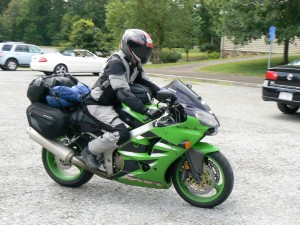
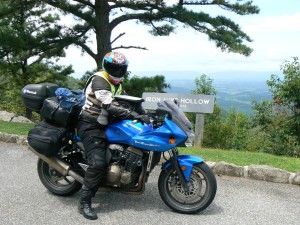
Even though selection is getting better, serious women motorcyclists must often settle for riding gear that is a compromise between style and protection. And, from what I hear, women riders aren’t wanting to wear gear that says “isn’t she cute in that pink outfit?”.
Because a lot of women-specific gear has become a bit over the top in the styling department, many female riders choose to wear gear designed for men, which often doesn’t fit right and may even lack the best venting or adjustability. I can’t help but think that the gear that manufacturers offer to women are designed by men who are hunting for what women really want. To be fair, it could very well be that women don’t quite know what they want in riding gear, since their identity as motorcyclists is constantly evolving.
Style is one thing, but a more significant issue is protection. Most women-specific riding gear provides inferior protection compared to gear that is routinely offered to men. Riding jackets and pants may not have the best armor or the most rugged materials.
One of many examples is the selection of Sidi race boots. The most advanced women’s boot offered by Sidi is the Vertigo Lei, which in comparison is middle-of-the-road Sidi boot for men. If you want a boot with all the protection and features of the top of the line boot, you’re plum outta luck, girls.
Here is a great post from GearChic about how to design motorcycle gear for women without being sexist.
Get Out of the Shadows
The second point Jeannine made in our conversation was quite intriguing… and that was the fact that women riders cannot often detach from their significant other who also rides. In the beginning of Jeannine’s riding career, she learned from me and rode exclusively with me (and often with her Mom).
Only recently has she realized that being in my shadow has held her back from gaining a deep level of confidence and being fully immersed in motorcycling. Her trip to Alaska with MotoQuest afforded her the opportunity to ride with a group of male riders, none of whom were her Dad.
This made her more dependent on her skills, knowing that I wasn’t there to take care of her (not that she needs me to take care of her anymore… although she will always be my little girl). With this freedom, Jeannine experienced riding at a deeper level of self-competence.
I’m Going Riding with The Boys, Have Dinner Ready, Okay?
It wouldn’t be inconceivable to think of a man saying that to his wife (or girlfirend), but can you imagine a woman saying that to her husband? Since most women riders probably have a male partner that is a motorcyclist himself, it is not bloody likely that the woman would think she could ride with another male rider who wasn’t her boyfriend or husband.
What does this mean? It means that a serious woman rider can’t ride with other male riders, lest she be scrutinized as a sort of loose harlot who would rather ride with someone else rather than her husband. To avoid this situation, she must either ride with other female riders (it’s easy to imagine her saying, “I’m going riding with Sheila”), or be stuck riding with her significant other (S.O.).
Yeah, But My S.O. Sucks at Riding
Imagine the conflict that a female rider would have to deal with who is more accomplished than her S.O? I can tell you that the male ego doesn’t tolerate being told that he is not as good as he thinks he is. This is a problem for anyone in this situation, whether male or female, but it rarely goes well when coming from a woman. Just ask Jeannine who is a track day control rider to mostly male riders.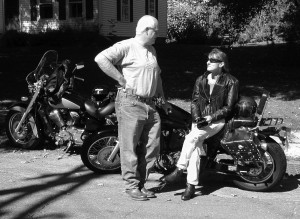
What to Do?
So, what’s the secret to the harmonious motorcycling relationship? First, if your wife or girlfriend wants to ride without you, ask her why and then listen carefully. If she mentions feeling stifled, encourage her to arrange a ride without you. She shouldn’t need your permission, but she needs your support.
If she says something that suggests that she doesn’t like how you ride, then listen carefully without your hairy ego getting in the way. Be a man of the 21st century and believe that it is possible that a woman can know more and ride better than a male.
The fact is that men weren’t born as proficient riders. If you accept that you don’t know all there is to know, then you’ll be a better S.O.
I can see where this topic could upset some riding couples’ status quo, but I think it’s worth a discussion, with the hope that both partners can reach their full potential as motorcycle riders. There is a lot more to consider around this subject, including the pressure women have from overbearing male partners, the intimidation that goes along with branching out, and the evolution of a self-identity that is more than being the second half of a riding couple. Stay tuned for more. In the meantime, give me your thoughts.
And check out this interesting post from Ride Apart about marketing to women.
Please Donate to Keep the Articles Coming
If you liked this article and the many other articles on this site, please toss a buck or five into the hat. It’s greatly appreciated!
- Click the PayPal “Pay Now” button.
- Then indicate quantity in $2.00 increments. – Example: put “2” in “QUANTITY” field to donate $4.00, “3” for a $6.00 donation, etc.
Why $2.00? Due to the PayPal fee structure, a $2.00 donation is significantly more beneficial compared to a $1.00 donation.
Thank You!
Check out these posts:
- Product Review: TCX X-Desert Boots
- Get Anxiety & Stress Under Control (Motorcyclist)
- KLX250s Upgraded and Accessorized
- Street Triple R Gets Accessorized
- Triumph Street Triple R Review
- How To Survive Mid-Corner Hazards
- #1 Reason for Motorcycle Crashes in Corners
How Can I help You? Online Coaching NOW AVAILABLE
Stay Informed: Subscribe NOW!
 Be a Better Rider: Sign Up for Personal Training with Ken
Be a Better Rider: Sign Up for Personal Training with Ken
Support Riding in the Zone: Buy a book
Support Riding in the Zone: Buy products from Twisted Throttle & Amazon
Check out these posts:
- Triumph Street Triple R gets accessorized
- Track Day Prep-Triumph Street Triple R
- Top 5 Ways Motorcycle Riders Screw Up
- Countersteering Will Save Your Life!
- The “No Countersteering” Myth
- How To Survive Mid-Corner Hazards
- #1 Reason for Motorcycle Crashes in Corners
Stay Informed: Subscribe NOW!
 Be a Better Rider: Sign Up for Personal Training with Ken
Be a Better Rider: Sign Up for Personal Training with Ken
Support Riding in the Zone: Buy a book
Support Riding in the Zone: Buy products from Twisted Throttle & Amazon












